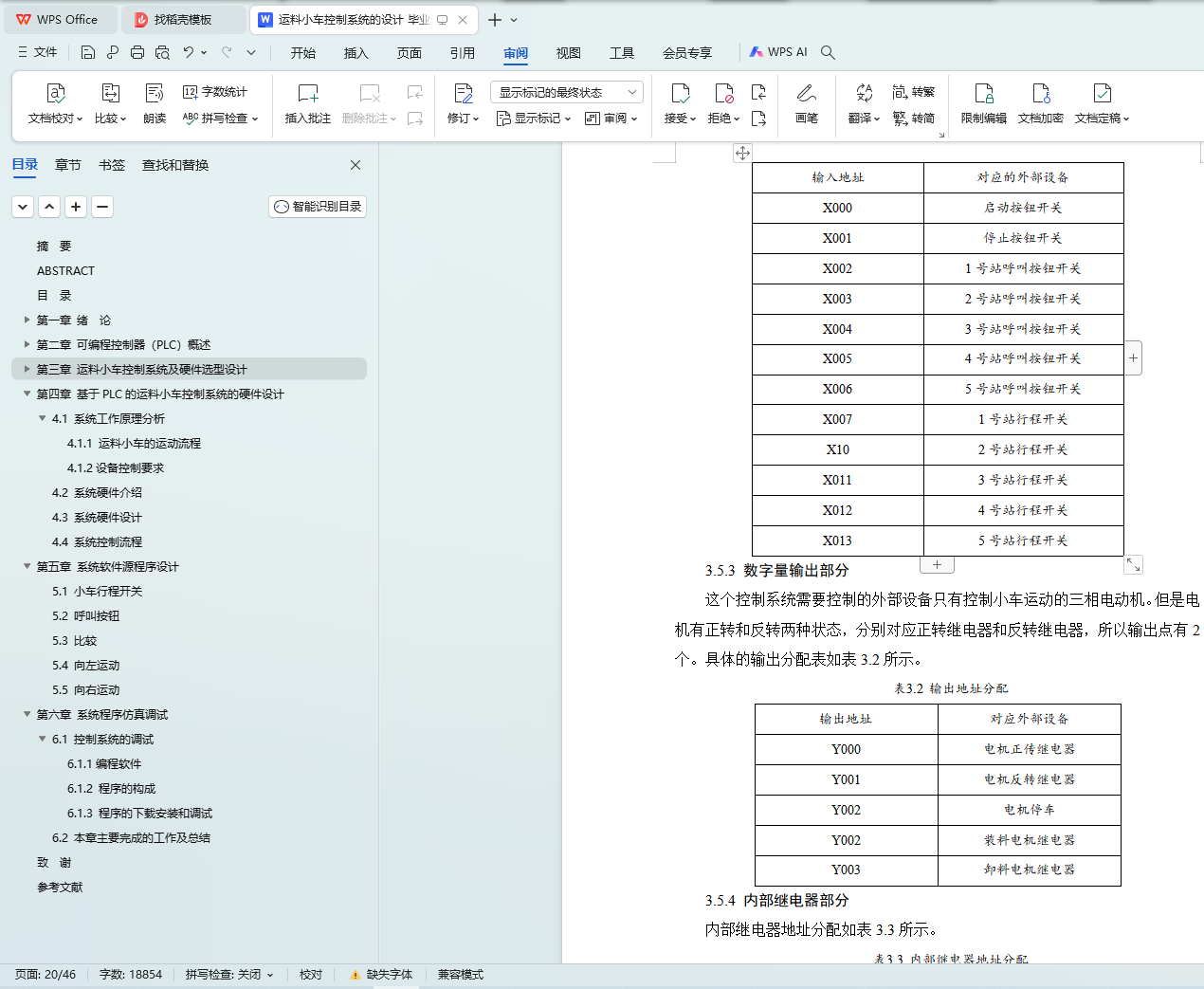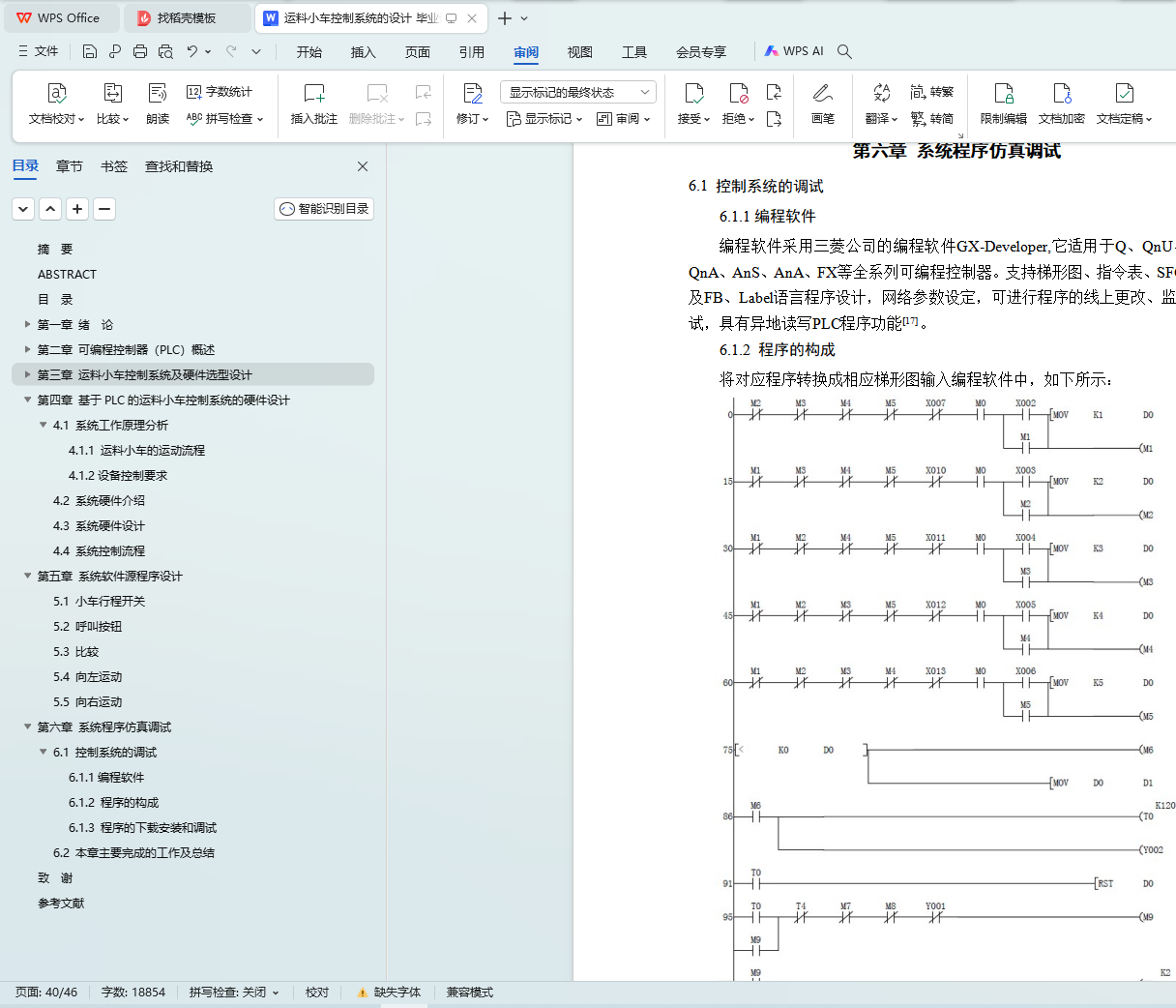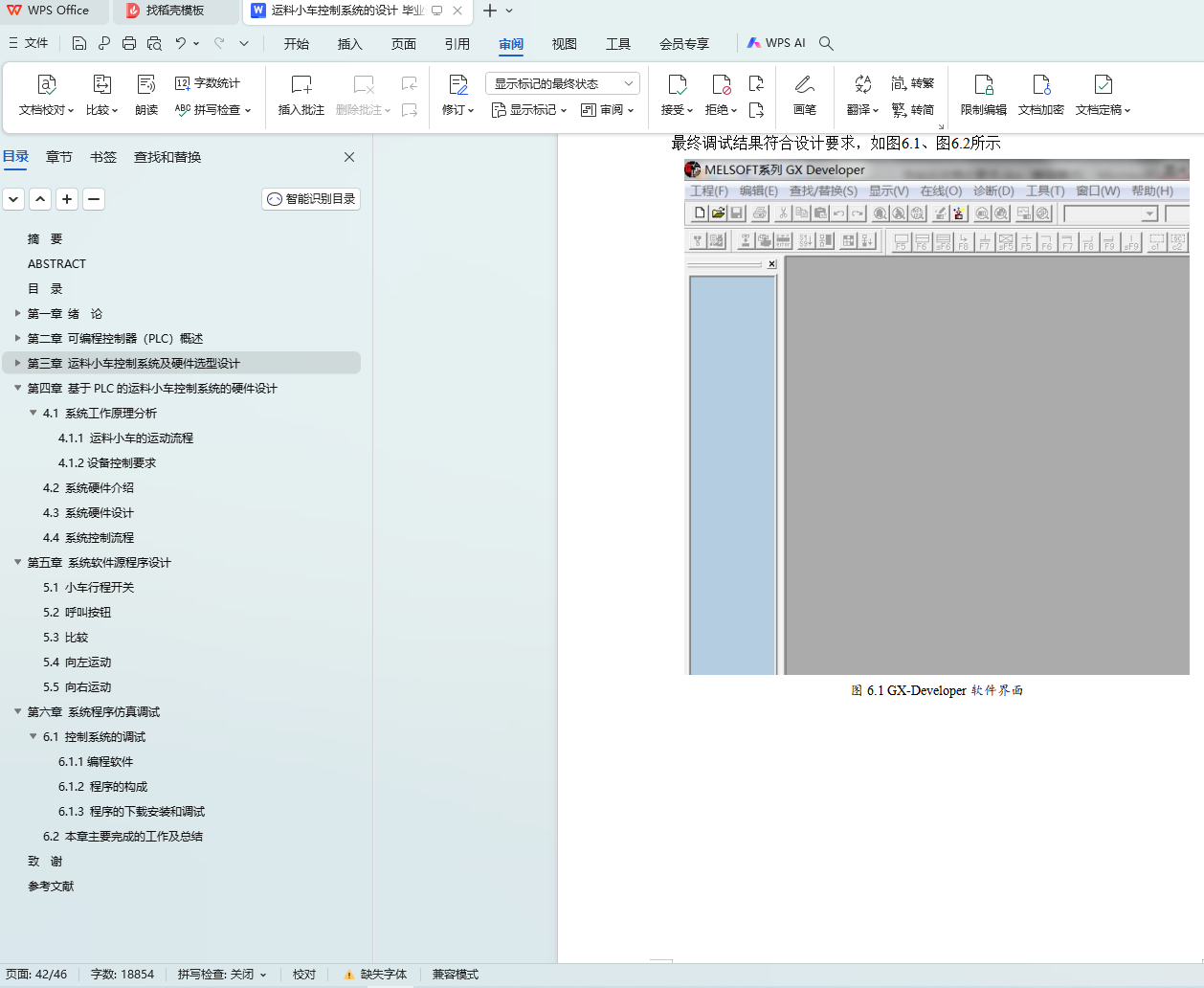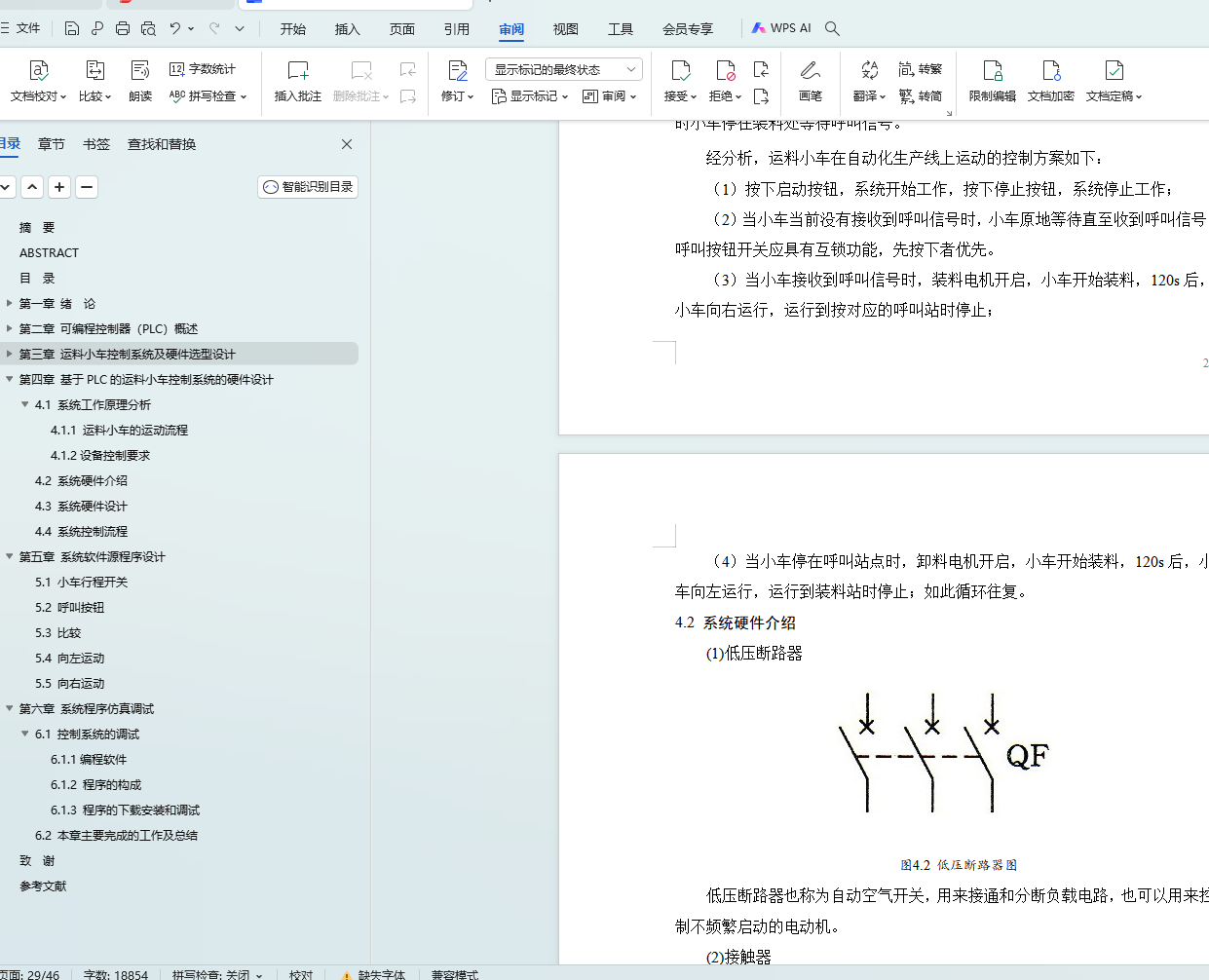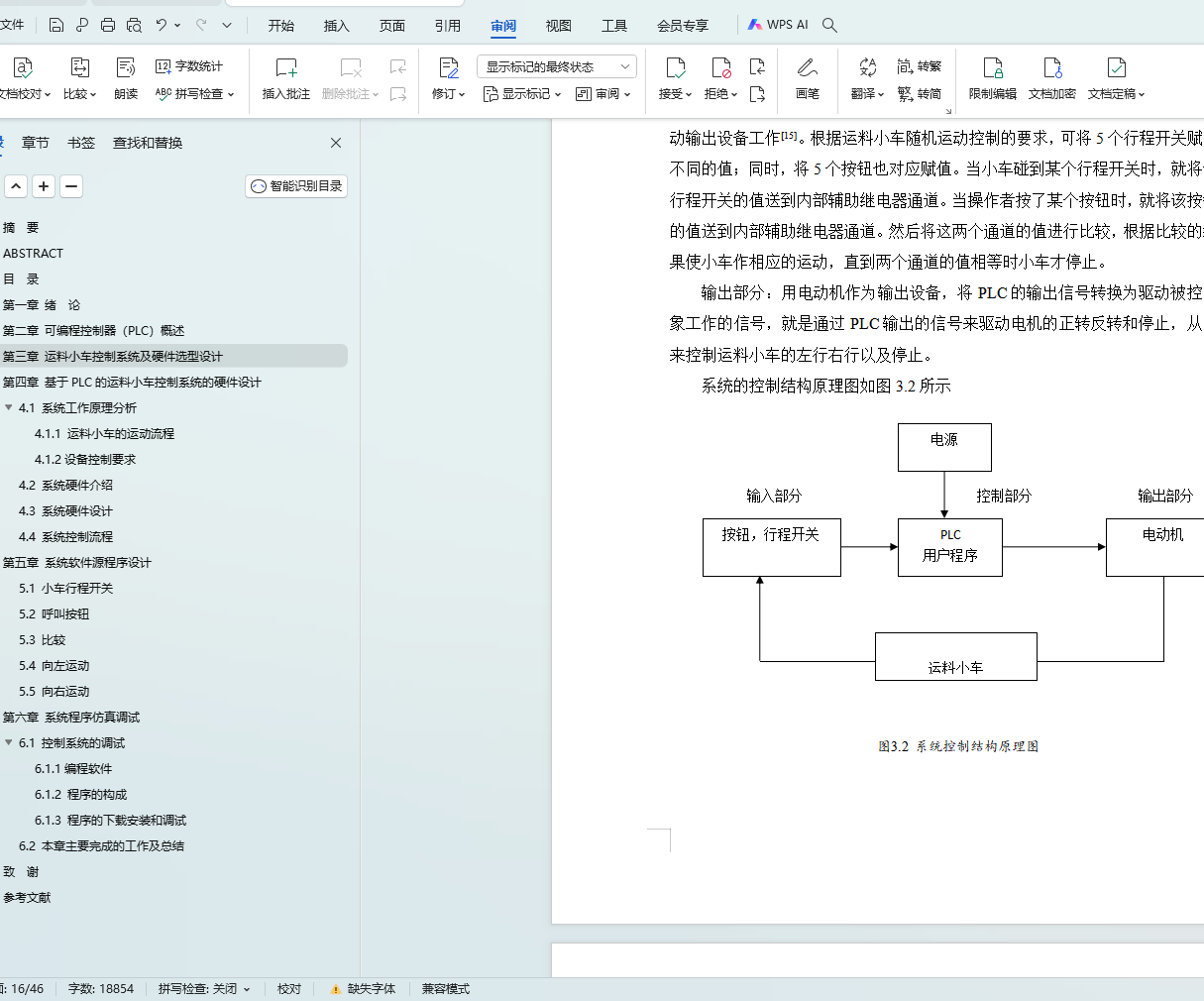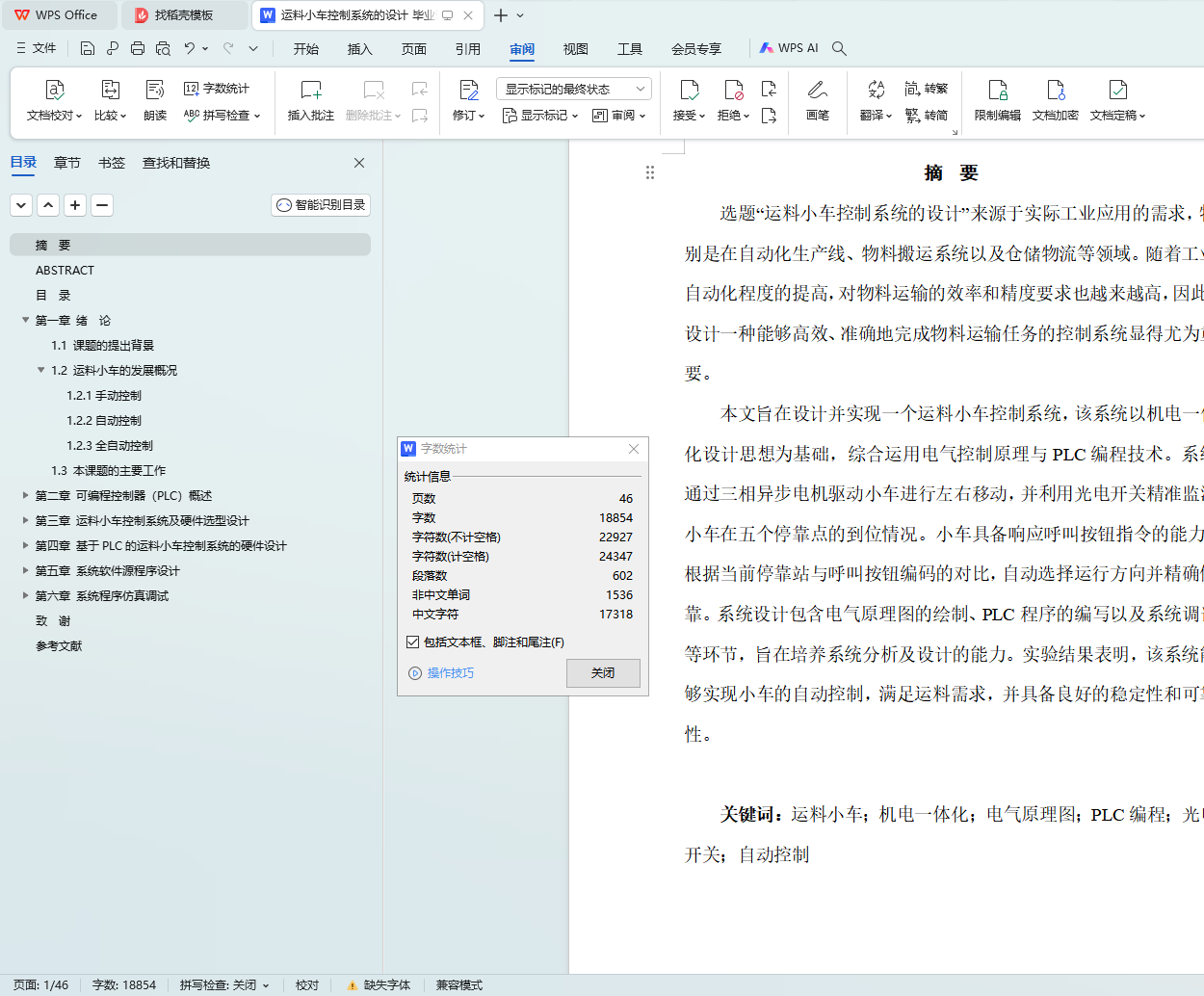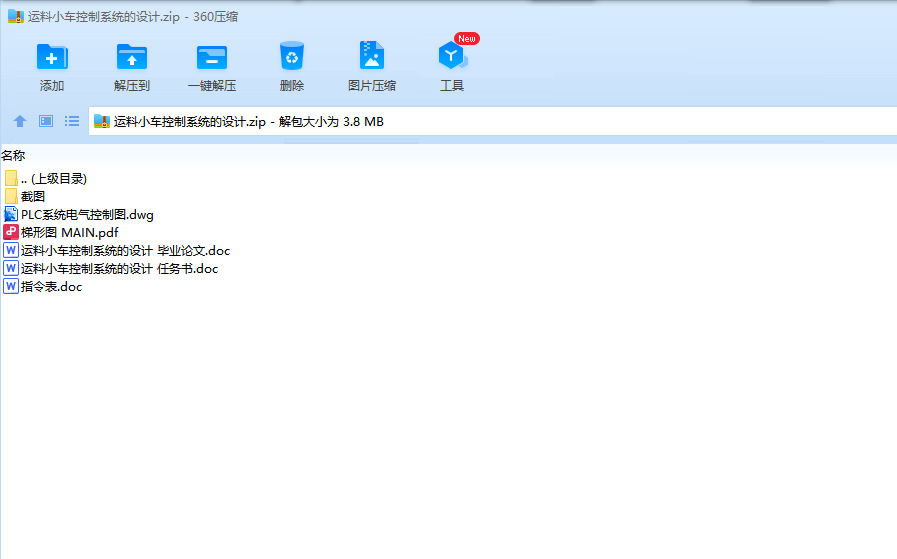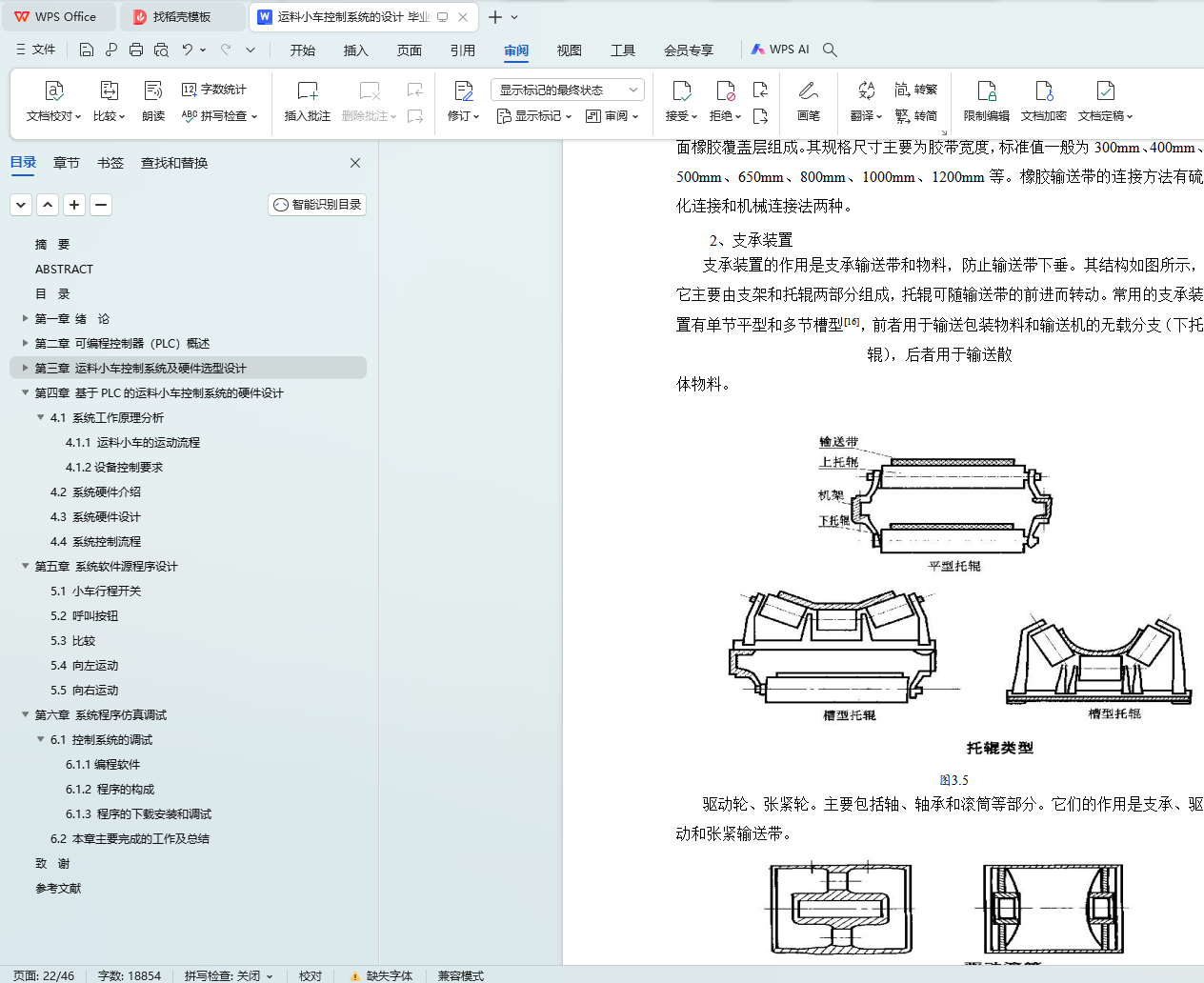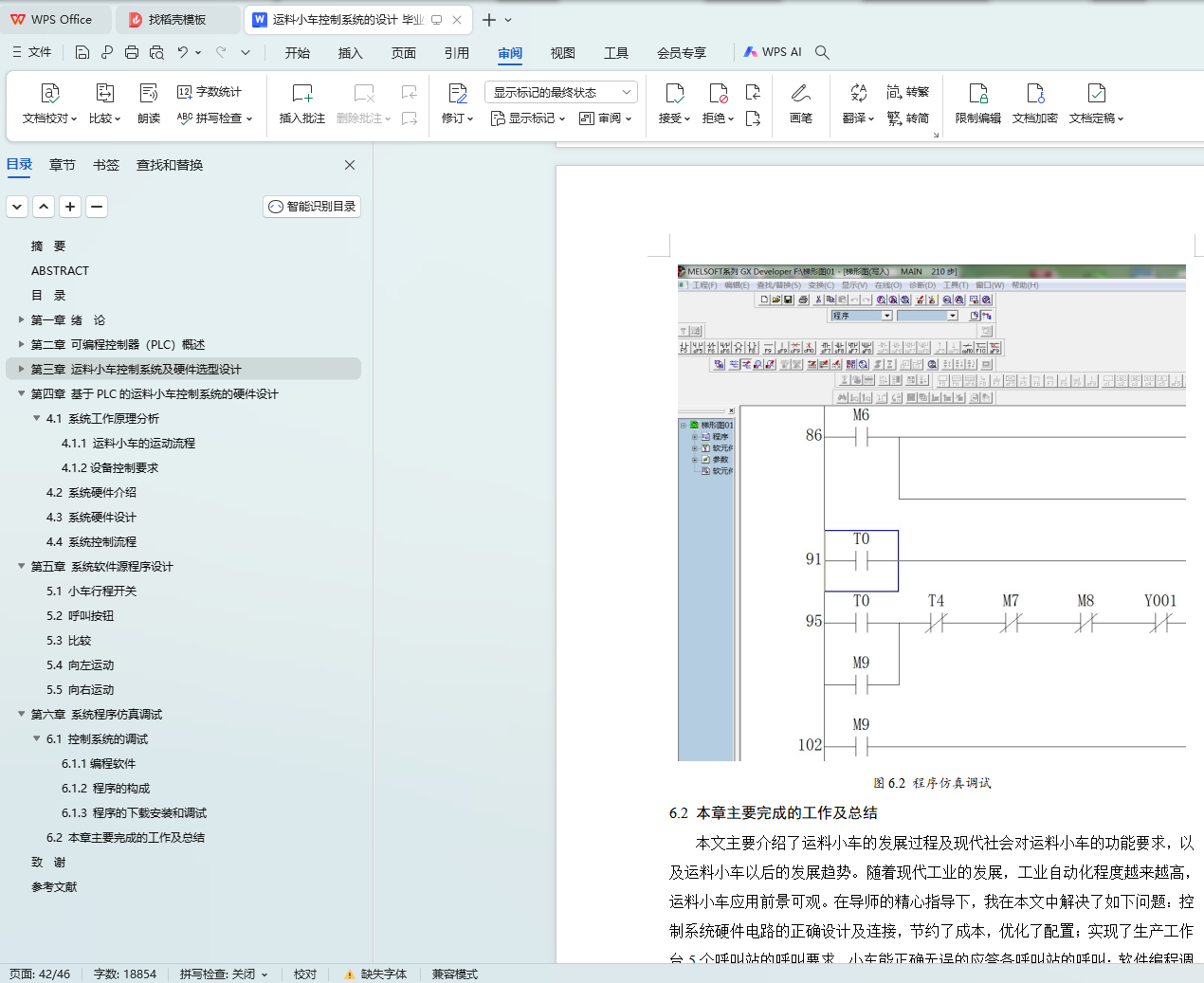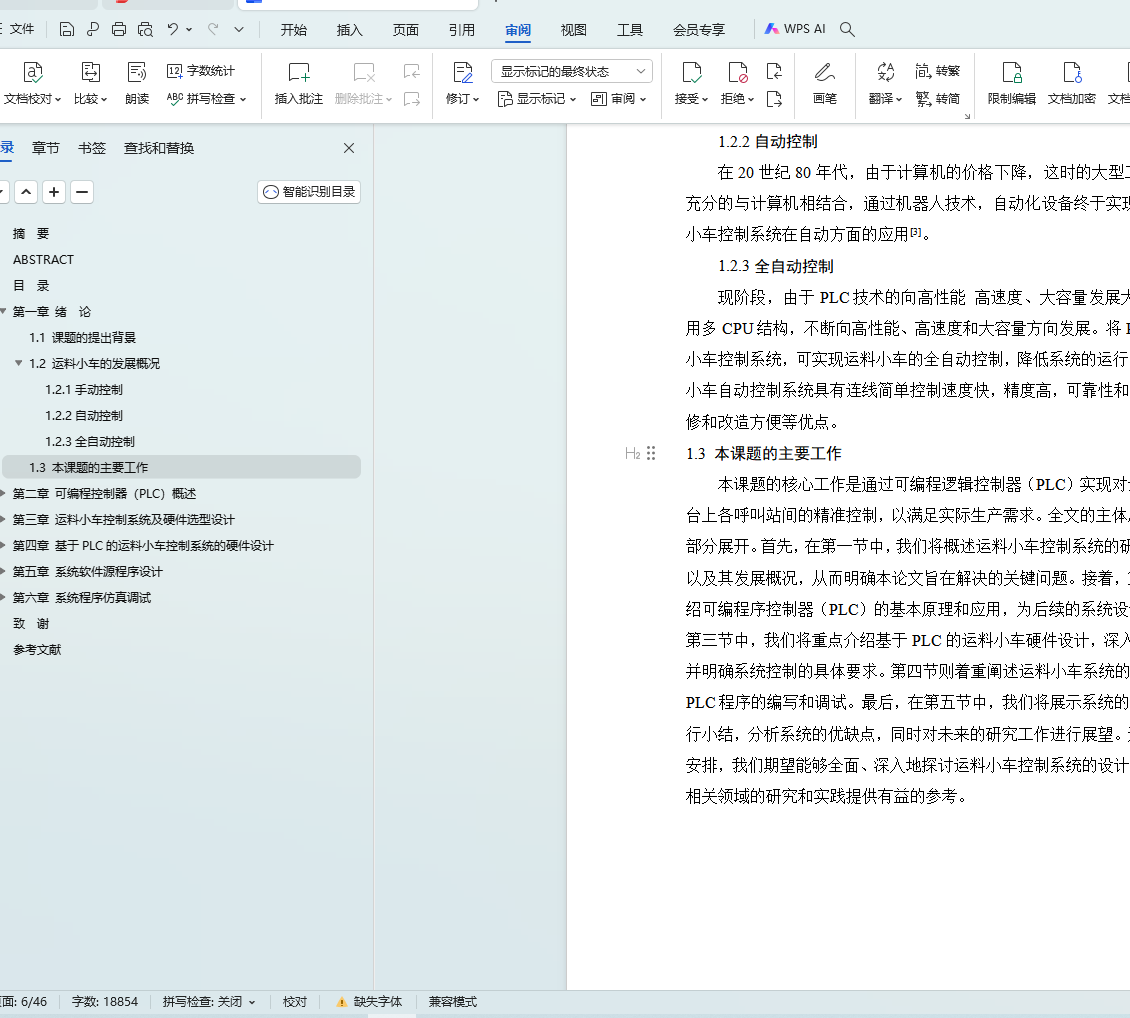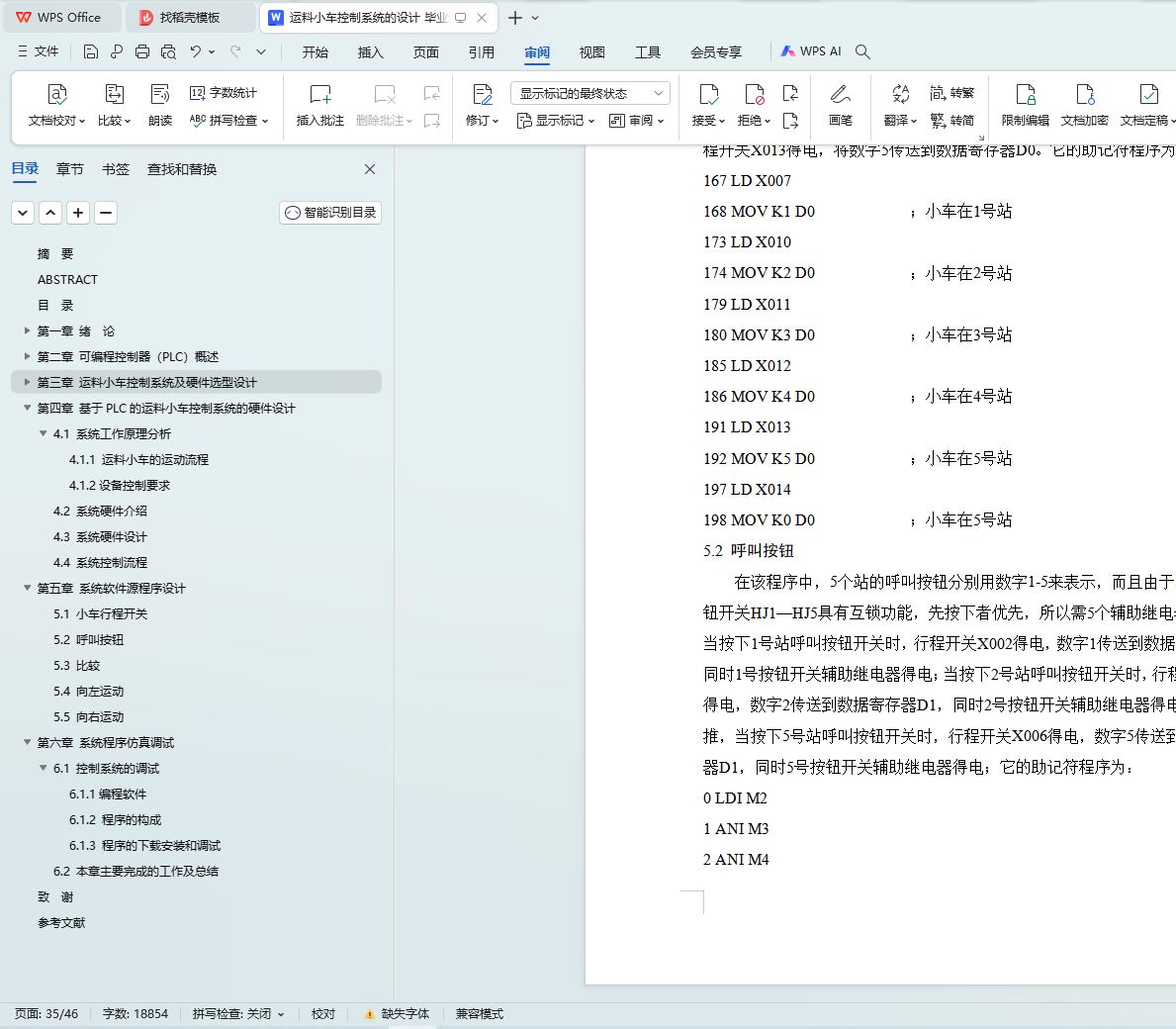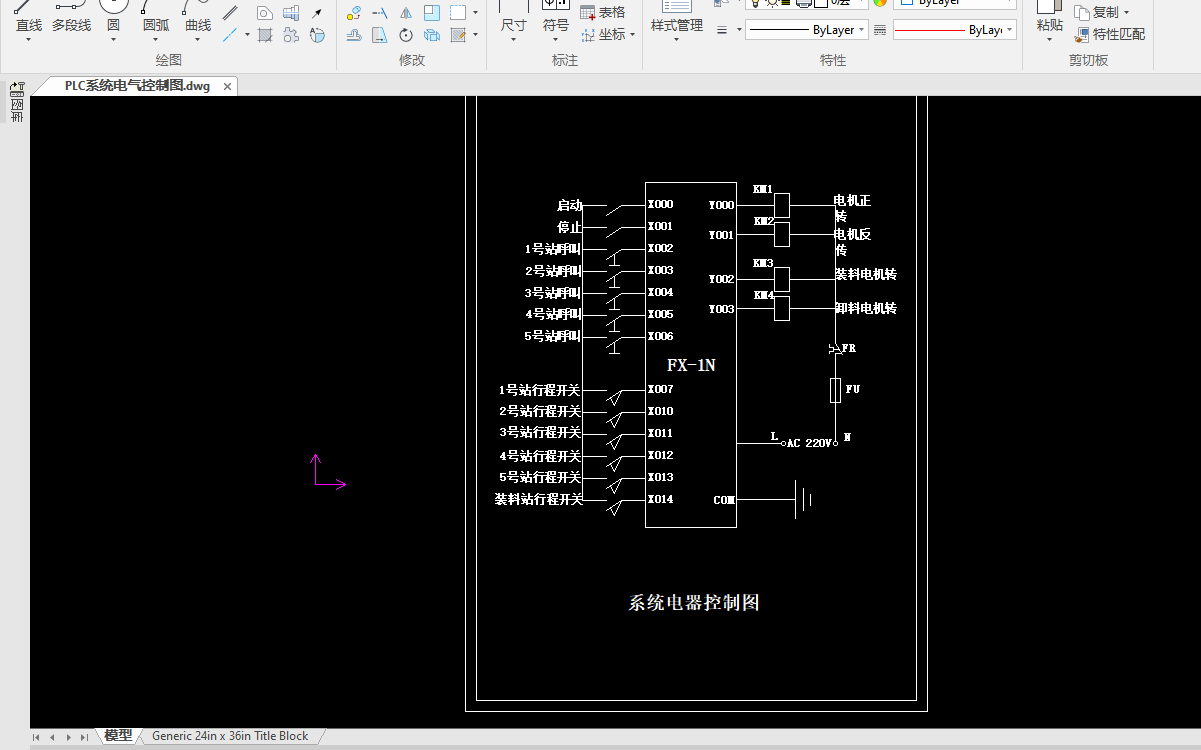摘 要
选题“运料小车控制系统的设计”来源于实际工业应用的需求,特别是在自动化生产线、物料搬运系统以及仓储物流等领域。随着工业自动化程度的提高,对物料运输的效率和精度要求也越来越高,因此,设计一种能够高效、准确地完成物料运输任务的控制系统显得尤为重要。
本文旨在设计并实现一个运料小车控制系统,该系统以机电一体化设计思想为基础,综合运用电气控制原理与PLC编程技术。系统通过三相异步电机驱动小车进行左右移动,并利用光电开关精准监测小车在五个停靠点的到位情况。小车具备响应呼叫按钮指令的能力,根据当前停靠站与呼叫按钮编码的对比,自动选择运行方向并精确停靠。系统设计包含电气原理图的绘制、PLC程序的编写以及系统调试等环节,旨在培养系统分析及设计的能力。实验结果表明,该系统能够实现小车的自动控制,满足运料需求,并具备良好的稳定性和可靠性。
关键词:运料小车;机电一体化;电气原理图;PLC编程;光电开关;自动控制
ABSTRACT
The topic "design of material trolley control system" comes from the needs of actual industrial applications, especially in the fields of automatic production line, material handling system and warehousing logistics. With the improvement of industrial automation, the efficiency and accuracy of material transportation are also more and more high. Therefore, it is particularly important to design a control system that can efficiently and accurately complete the task of material transportation.
This paper aims to design and realize a material transport trolley control system, which is based on the combination of electrical control principle and PLC programming technology. The system drives the car left and right through the three-phase asynchronous motor, and uses the photoelectric switch to accurately monitor the position of the car at the five docking points. The car has the ability to respond to the call button command. According to the comparison between the current stop station and the call button coding, it can automatically select the running direction and dock accurately. The system design includes the drawing of electrical schematic diagram, PLC program writing and system debugging, aiming to cultivate the ability of system analysis and design. The experimental results show that the system can realize the automatic control of trolley, meet the material demand, and have good stability and reliability.
Key words: trolley; mechatronics; electrical schematic; PLC programming; photoelectric switch and automatic control
目 录
摘 要
ABSTRACT
目 录
第一章 绪 论
1.1 课题的提出背景
1.2 运料小车的发展概况
1.2.1手动控制
1.2.2自动控制
1.2.3全自动控制
1.3 本课题的主要工作
第二章 可编程控制器(PLC)概述
2.1 可编程序控制器定义
2.2 PLC的特点
2.2.1编程方法简单易学
2.2.2硬件配套齐全,用户使用方便
2.2.3通用性强,适应性强
2.2.4可靠性高,抗干扰能力强
2.2.5系统的设计、安装、调试工作量少
2.2.6维修工作量小,维修方便
2.2.7体积小,能耗低
2.3 PLC的应用领域
2.3.1开关量逻辑控制
2.3.2运动控制
2.3.3闭环过程控制
2.3.4数据处理
2.3.5通信
2.4 PLC的基本结构
2.4.1 CPU模块
2.4.2 I/O模块
2.4.3 编程器
2.4.4 电源
第三章 运料小车控制系统及硬件选型设计
3.1 系统的运行方式
3.2 控制系统的方案设计及论证
3.2.1 控制系统的方案设计
3.2.2方案论证
3.3 系统的控制原理
3.4 PLC选型
3.4.1 选型分析
3.4.2 系统的安装
3.4.3 输入/输出模块选择
3.4.4 开关量I/O点的节省和模拟量I/O模块的代用
3.4.5 抗干扰措施
3.5 系统资源分配
3.5.1 I/O地址分配
3.5.2 数字量输入部分
3.5.3 数字量输出部分
3.5.4 内部继电器部分
3.6 工作台设计
3.6.1胶带输送机结构与工作过程
3.6.2简单计算及选用
3.6.3 输送带
3.6.4驱动滚筒
第四章 基于PLC的运料小车控制系统的硬件设计
4.1 系统工作原理分析
4.1.1 运料小车的运动流程
4.1.2设备控制要求
4.2 系统硬件介绍
4.3 系统硬件设计
4.4 系统控制流程
第五章 系统软件源程序设计
5.1 小车行程开关
5.2 呼叫按钮
5.3 比较
5.4 向左运动
5.5 向右运动
第六章 系统程序仿真调试
6.1 控制系统的调试
6.1.1编程软件
6.1.2 程序的构成
6.1.3 程序的下载安装和调试
6.2 本章主要完成的工作及总结
致谢
参考文献
